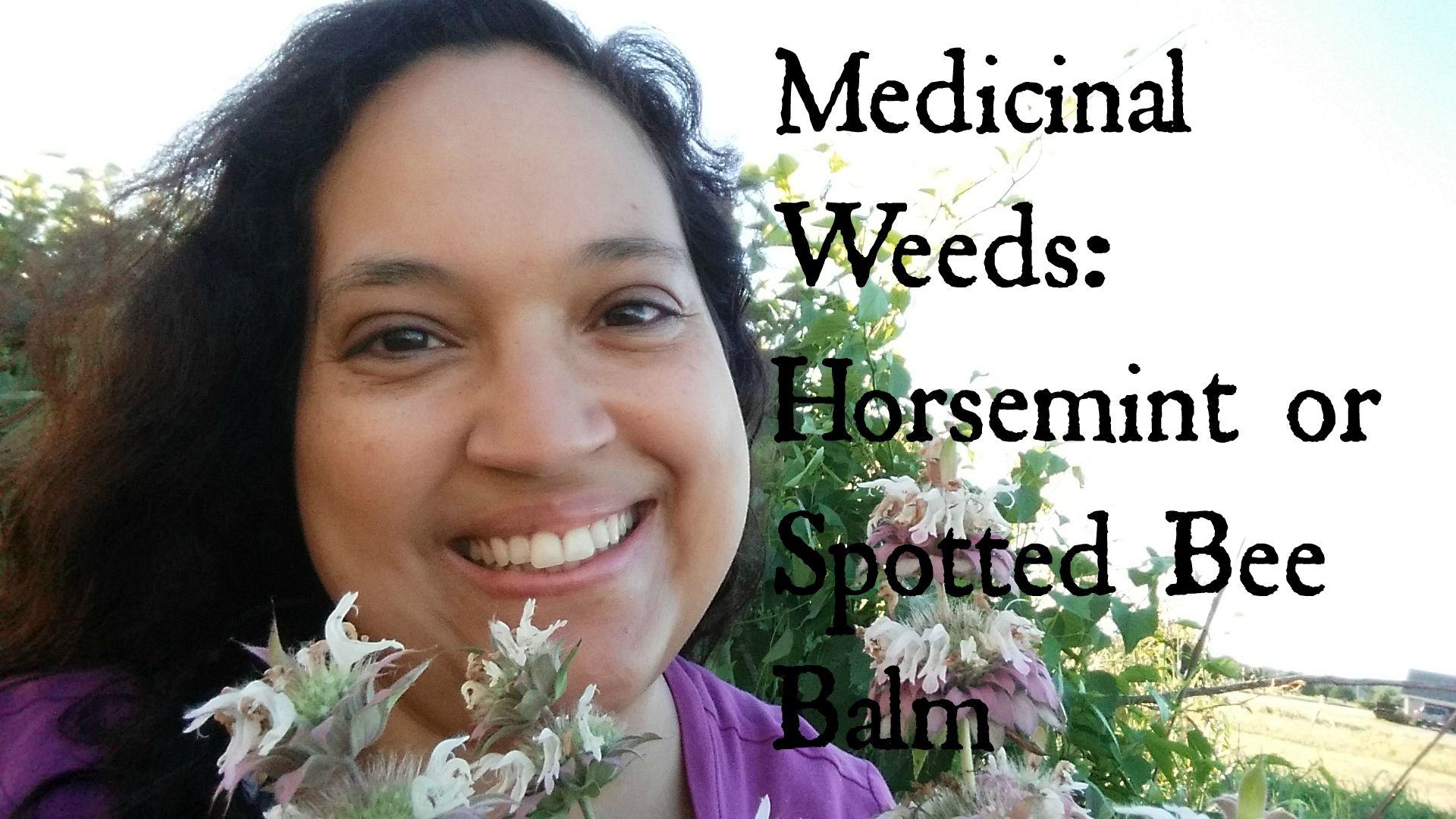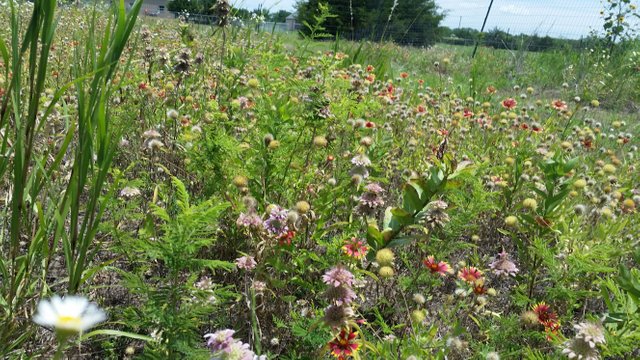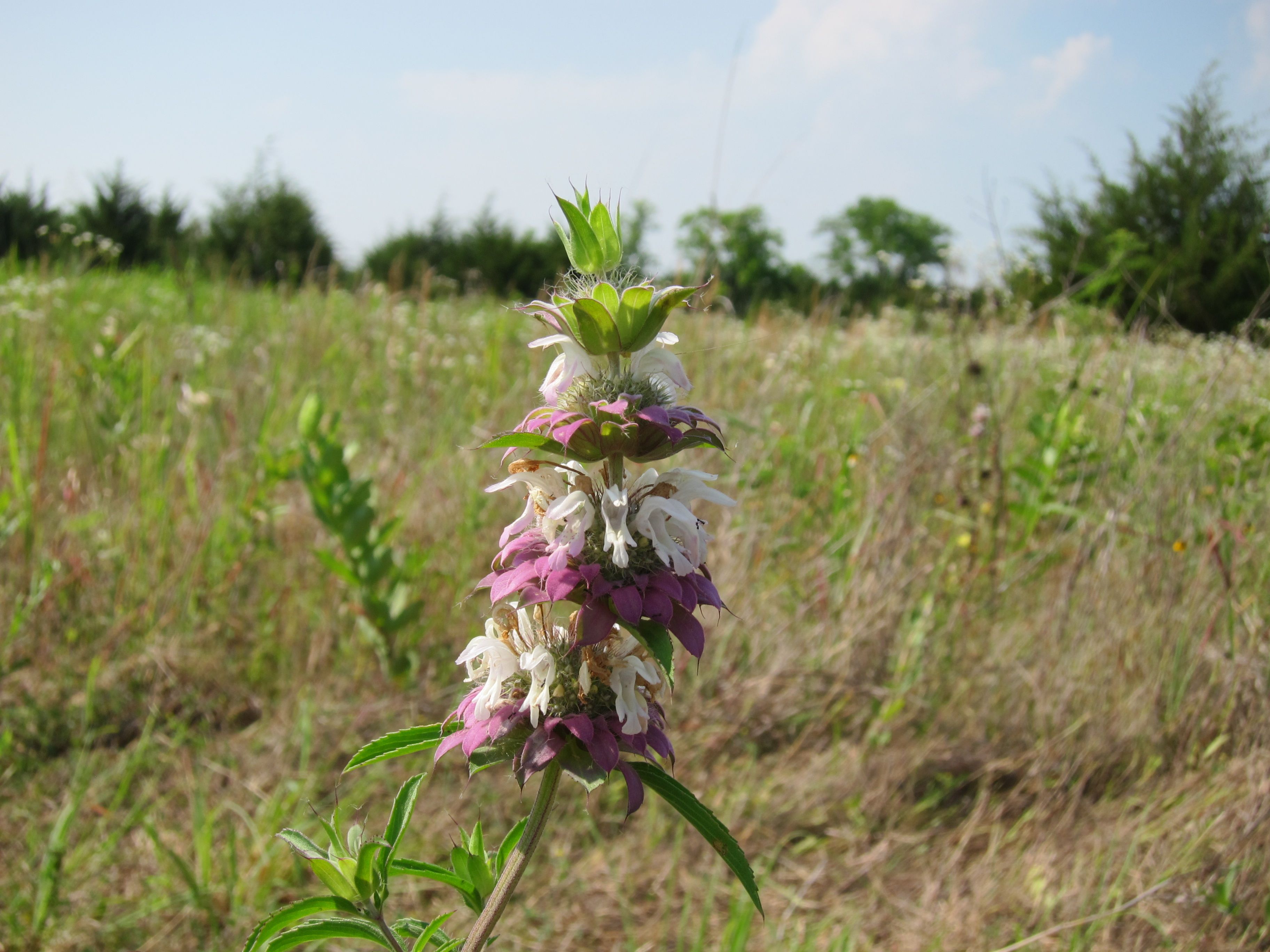WILD, MEDICINAL WEEDS: HORSEMINT (SPOTTED BEE BALM), AN ANTI-BACTERIAL & ANTI-CANCER PLANT

In my latest video on medicinal weeds, we are on the wild side of my home property to take a look at horsemint, also called spotted bee balm (Monarda punctata). Horsemint is a beauty of a wild plant, growing in tallish stands in meadows and prairies. The blooms are long and showy, though I haven't noticed a strong fragrance. As gorgeous as the flowers are, horsemint's real magic is in their medicine and usefulness to the ecosystem.
Medicinal Value of Horsemint
It would be impossible to talk about the benefits of spotted bee balm without mentioning two star components: thymol and carvacrol. Horsemint is very high in both, thymol being a terpene extracted from plants like oregano and heavily used in the medical industry as a sedative, while carvacrol is a terpenoid phenol that works synergistically with thymol, enhancing benefits. These are, of course, not the only compounds in horsemint, hence, why I am a big proponent of learning how to use medicinal plants as a whole herb, not just a lab-isolated extract. Thymol and carvacrol are big contributors to the strong flavor of plants like oregano, bergamot, and so, also horsemint. You certainly can dry horsemint and use it as a spice, but go easy at first until you find the right amount that works for you!
Studies of thymol and carvacrol are revealing their huge potential for medicine. Together they work as an impressive bacterial infection fighter, including demonstrating an ability to enhance the effectiveness of antibiotics against resistant strains! That's exciting news for people who find themselves with aggressive strains of bacteria like e. coli, salmonella, and Staphylococcus aureus. Yup, I said staph.
Candida sufferers, THIS is your plant. Thymol and carvacrol containing plants are known for their ability to assist with fungal infections externally and fungal overgrowth internally. You can incorporate horsemint into infused oils, balms, sprays, or lotions to spread over ringworm and other fungal infections. Drinking a weak tea regularly can help to control Candida overgrowth internally, though, as many of my clients can tell you, this won't absolve you of having to take the necessary lifestyle steps to effect lasting change.
Like other components of horsemint, thymol and carvacrol show antioxidant activity in the body. They are currently being studied for potential use in weight loss and fighting cancer. Exciting stuff!

A field full of horsemint. Image by Jennifer Capestany.
You can see how, just by these two components alone, horsemint is a handy plant to have around. It's a late spring bloomer, and will often flower through early summer, depending on where you are. By fall, it's going to seed, so head out soon if you want to harvest horsemint! Go for the leaf and flowers. It is okay to dry them for use later. I do the same.
I find that horsemint is quite strong in flavor, stronger than oregano. In teas, I don't usually add more than a leaf and a few flowers per cup. A weak horsemint tea, or adding a small amount to a blend, can help with digestive issues, cold care, bacterial infection, and fungal overgrowth, as discussed above. It may even help you in your weight loss journey or help to fight cancer. It's antioxidant activity helps fight aging.
A stronger tea can be brewed up to make a sweating tea in cases of fever or cold. Native Americans historically have used horsemint in this way. It also works well as an aromatic in saunas or ceremonial fires. In my home horsemint finds its way in small quantities into oxymels, syrups, tea blends, and as a mouthwash.
Warning: It should be noted that thymol as an isolate, and even the essential oils of oregano and bergamot, are very strong compounds. It's far safer to work with a thymol containing plant as a whole herb than the essential oil, especially for internal purposes. Even used externally, both are known irritants.
In the Garden
As you can probably see in the video, horsemint is a draw for several beneficial insects, including bees, wasps, certain butterflies, and, rumor has it, hummingbirds (This I have not seen). If you don't have horsemint, or spotted bee balm, growing on your property, you can grow it yourself. Its growing needs will be similar to the monarda that you find in catalogs. I've even seen spotted bee balm, or its close cousin, lemon mint (Monarda citriodora), in catalogs specializing in native plants for America.
It's sun friendly and pretty drought tolerant. It will spread in large clumps, so give it lots of space to fill. Horsemint makes a nice addition to bouquets in the house too! It grows tall, so middle to the back of the garden bed recommended.
How's all that for amazing? Isn't horsemint great? And you can tap into these health boosting properties by heading out and finding the medicine growing all around you. Make it a part of your life to incorporate wild plants into your diet, your medicine, your daily living. It costs you nothing but a little time, and the benefits are limitless.

Horsemint bloom. Note the pink bracts and small, white flowers. Image by Jennifer Capestany.
References
- "Use of natural antimicrobials to increase antibiotic susceptibility ... - NCBI." 13 Apr. 2010, https://www.ncbi.nlm.nih.gov/pubmed/20457472. Accessed 21 Jun. 2017.
- "Monoterpene Phenolic Compound Thymol Promotes Browning of 3t3 ...." https://www.ncbi.nlm.nih.gov/labs/articles/27431894/. Accessed 21 Jun. 2017.
- "Anticancer Effect of Thymol on AGS Human Gastric Carcinoma Cells.." https://www.ncbi.nlm.nih.gov/pubmed/26437948. Accessed 21 Jun. 2017.
Other Posts You May Like:
- WILD, MEDICINAL WEEDS: HOW TO RECOGNIZE & USE MULLEIN (VERBASCUM THAPSUS)
- THREE SPRINGTIME BACKYARD WEEDS TO LOOK FOR
- EATIN' WILD SERIES (EDIBLE WEEDS): HENBIT
- ASK AN HERBALIST VIDEO 1: MY STORY & FAVORITE MEDICINAL PLANT
Health Disclaimer: You own yourself. Always do your research when trying out new foods, especially if you have a health condition, and/or are on prescription medications. Wild edibles are nutrient dense. Most of us are not used to that. Go slowly, not only to test for reaction, but also to give your body a chance to accustom to the richness of wild edibles. No information on this website should be considered medical advice, nor should the information here be considered a complete listing of all possible plant components or dangers. Neither Prairie Hawk Botanica nor Jennifer Capestany will be responsible for injury. Anything that you learn from Prairie Hawk Botanica, its blog, or Jennifer Capestany must be considered informational only.

Author: Jennifer Capestany
Jennifer is a clinical herbalist and health coach, specializing in autoimmune diseases like rheumatoid arthritis. Her interest in plant medicine led Jennifer to spend years studying herbology, physiology, and nutrition. She works one-on-one with her clients via her herbalist and health coaching business, Prairie Hawk Botanica. Jennifer lives on a homestead in rural Texas with her husband, 2 children, and various animals. In her spare time she loves to be in her large herb and vegetable garden. Sharing herb knowledge and her love of natural healing with others is her calling. Steem and Bitcoin accepted.
Awesome! Thank you so much for sharing this medicinal info! I'm looking to learn as much about herbal medicine as possible and start small with making some tinctures and whatnot. Have you ever distilled your own essential oils? Just followed ya, looking forward to more posts!
No, I don't yet have the setup to make my own essential oils. I'd also have to grow a LOT of herb matter to produce very small quantities of oil, so at this point I just buy what I need. Let me know how your first forays into homemade herbal remedies go! I bet that everyone taking part in the Food is Free movement will benefit from the experience you gain. Looking forward to more of your posts as well!
Thanks for that video. I grow an organic vegetable garden but know very little when it comes to medicinal herbs - although I do buy some at the health store. I'm looking forward to additional posts. Check out my gardening posts if you're into vegies.
You're very welcome! I love sharing knowledge on how to use plants medicinally.
There is a whole lot of info in this post thank you. Is using the whole plant to make tea the best way or are there processing do's/don't s?
I would use just the leaves and flowers to make teas. They will be the easiest to extract medicine from, and are the most commonly used for this plant.
Ok thank you for the clarification
You're quite welcome!
This is important info people should be aware of. We just switched from name brand detergent to the all natural stuff available everywhere.
Cool! I've also been known to make my own in big, five gallon buckets, lol!
Creative information. is the plant really working against cancer? upvote and follow
Let's say rather that the plant has compounds in it that fight cancer. It does this via numerous actions that include antioxidant capabilities, cell growth suppression, and an ability to cause changes in cell membranes that lead to their death. It's all about the cell when it comes to health.
oh got the idea.Thanks for the info.
You are always welcome. Thanks for stopping by!
Thank you very much! I am a firm believer in natural healing for my family and animals. I came to this belief after being involved in medical corruption. I just wrote a post about this. I am always studying natural healing so I have resteemed, upvoted and followed! Cheers! https://steemit.com/life/@jockey/my-partricipation-in-corruption-of-the-medical-industry
Thanks very much! Funny enough, I stumbled upon and upvoted your article on corruption in the medical industry before you commented here! We must be meant to be connected. :)
meep
I got meeped!
meep
Great post, well written and covered all the good stuff... Resteemit! upvote!
Thank you kindly!
Awesome info. Just found your blog here. Gonna check you out. Thanks for the great video.
You're very welcome! Thanks for visiting!
Amazing photo's and narrative! Thank you for sharing.
Thanks, Michael!
You're welcome Jennifer! Have a great day!